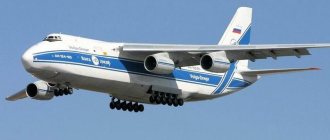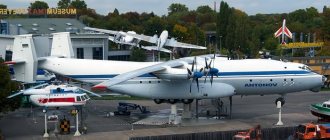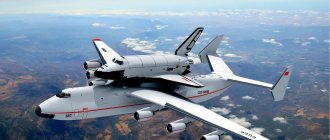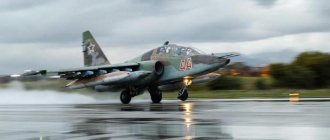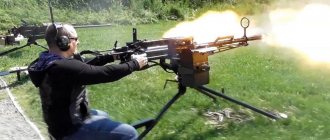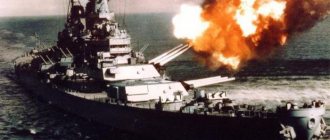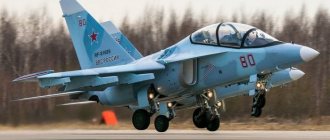The newest Tu-160M, the heaviest combat aircraft in the world, took to the skies for the first time
“The flight took place at an altitude of 600 meters and lasted about 30 minutes. The crew of test pilots of Tupolev PJSC performed maneuvers to test the stability and controllability of the aircraft in the air,” the Rostec state corporation reported.
Let us recall that the program for the reproduction of Tu-160 aircraft in a modernized form was launched by the decision of Russian President Vladimir Putin in 2015.
It is noted that within the framework of the state contract between the Ministry of Industry and Trade of Russia and Tupolev, in a short time, the design documentation for the Tu-160M aircraft was completely digitized, the technology of vacuum welding of titanium products was restored, and the production of airframe components was resumed. A new cooperation has also been formed from leading industrial enterprises in the fields of metallurgy, aircraft manufacturing, mechanical engineering and instrument making.
“We have restored the full production cycle of the Tu-160, but in the M modification, using modernized engines, modernized aircraft control systems, navigation systems and weapons control systems,” Russian Minister of Industry and Trade Denis Manturov said yesterday. — The modernization of the Kazan Aviation Plant played a major role in restoring the production of unique aircraft: the workshop equipment and flight test base were updated, and the world’s largest installation for electron beam welding and vacuum annealing of titanium was put into operation. Today we see significant prospects for the Tu-160 platform: further development will make it possible to use it for new types of weapons, including promising ones.”
According to the head of the Ministry of Industry and Trade Denis Manturov, the Tu-160M missile carrier can become a carrier of new types of weapons, including promising ones
It is worth noting that the new aircraft retained the appearance of its legendary predecessor, but was created on a completely new technological basis using digital technologies.
“Tu-160 is one of the largest and most high-tech projects in the aviation industry. The implementation of this program required not only updating production facilities, but also creating a fundamentally new digital environment for working on the project,” said UAC General Director Yuri Slyusar. “The fundamental importance of today’s event is that the new machine was completely built anew, from scratch - the new machine has 80 percent updated and modernized systems and equipment.”
As a result of modernization, the bomber's range increased by approximately 1,000 kilometers. The Tu-160M configuration includes a new Novella radar, as well as a new self-defense complex and electronic surveillance system. The aircraft is also equipped with a “glass cockpit” and an updated set of communications and navigation equipment.
Recently, the commander of the Long-Range Aviation of the Russian Aerospace Forces, Lieutenant General Sergei Kobylash, said that in 2022 two modernized Tu-160M strategic missile carriers will join the ranks.
“A feature of the modernized aircraft is the installation of new electronic warfare systems, modern navigation systems, equipment with new types of weapons, new avionics, as well as the installation of the latest means of displaying information on the crew’s instrument panels,” noted the lieutenant general.
Tu-160 (according to NATO codification - Blackjack, and in Russia the plane is unofficially called the “White Swan” for its grace) is a Soviet, then Russian supersonic strategic bomber-missile carrier with variable wing geometry. Along with the Tu-95MS, it forms the basis of the Long-Range Aviation fleet of the Russian Aerospace Forces (VKS). Designed to destroy the most important targets in remote areas and deep behind enemy lines with nuclear and conventional weapons. The aircraft is capable of carrying 12 cruise missiles on board, all weapons are located inside the fuselage. Tu-160 is the heaviest combat aircraft in the world.
NK-32 series 2: new and improved
With new and improved NK-32 series 2 engines, the Tu-160M strategic bomber received not only an increase in range, but also increased thrust.
Standard turbojet engines use two low and high pressure compressors to supply air to the combustion chamber. The NK-32 engine also uses a third compressor - medium pressure, which is rotated separately by a turbine. This design gives the aircraft the ability to operate over a wide range of speeds. Plus - endurance, the Tu-160 can fly at supersonic speed for 2 hours. Not a single plane in the world is capable of this. The engine is also more economical, which is important for modern strategic aviation.
The NK-32 engine also uses a third compressor - medium pressure, which is rotated separately by a turbine.
NK-32 is a two-circuit three-shaft turbojet engine with a common afterburner (TRDCF). The compressor has a three-stage fan, five medium-pressure stages and seven high-pressure stages. The compressor blades are made of titanium, steel and (in the high pressure cascade) nickel alloy. The combustion chamber is annular multi-nozzle.
The turbine has one high-pressure stage (diameter about 1 m, combustion temperature 1575 K) with cooled monocrystalline blades, one medium-pressure stage and two low-pressure stages. The engine nozzle is adjustable, self-similar. The control system is electronic, with hydromechanical duplication.
The first modernized strategic bomber Tu-160M (presumable serial number 8-05) of the new construction of the Kazan Aviation Plant - a branch of PJSC Tupolev (as part of PJSC United Aircraft Corporation) on its first flight. Kazan, 01/12/2022 (c) PJSC "United Aircraft Corporation"
Design features of the Tu 154 aircraft
Nevertheless, the aircraft created at the Tupolev Design Bureau became the most popular civil aviation aircraft in the USSR. For many years, the Tu 154 was considered the hallmark of Aeroflot, operating regular flights to all major cities of the Soviet Union, and making international flights to the countries of Western and Eastern Europe. The cars flew in Africa and Latin America, in the countries of the Middle East and Asia.
Structurally, the aircraft was a cantilever low-wing aircraft with variable wing sweep, which varied in different areas in the range of 35-41°. The tail unit had a T-shaped design. The rear arrangement of three engines helped reduce noise in the cabin and eliminated the car from skidding during flight if one of the engines failed. Two engines are located on the sides of the pylon. The third jet engine is installed inside the aircraft body. The plane had a stable three-post landing gear.
A distinctive feature of the vehicle was its radar and navigation equipment. The Tu 154 was the first to be equipped with the Groza 154 meteorological radar, thanks to which the aircraft could avoid a collision with a thunderstorm front during flight.
In general, we can talk about the aircraft for a long time, a lot and in a good way. The plane was a modern, reliable and comfortable machine for its time. In the 70s and 80s, this aircraft was a real competitor to its Western counterparts. American Boeing 727 and 757 and European Airbus A320 carried the same number of passengers and flew a similar distance. The only thing in which the Soviet Tu 154 lost was the presence of advanced navigation equipment on board and the lack of economical engines.
The era of commercial jet aviation
Many topics in modern studies of the history of Soviet aviation concern pages related to civil passenger transportation. In the Soviet Union, after the end of the Great Patriotic War, the civil air transportation industry began to develop. In a huge country, the vast expanses of Western and Eastern Siberia were being developed. The Far East and regions in the Far North experienced a huge influx of people traveling to the construction sites of socialism. In such conditions, the transport infrastructure of the Soviet Union needed an air mode of transport capable of covering vast distances and reducing time frames. Work in this direction was carried out constantly. Domestic and foreign experience was used to create passenger ships.
First there were the piston Il-12 and Il 14. They were followed by the already turboprop aircraft An-24 and Il-18. Following the propeller-driven machines, it was the turn of the jet technology. Here the Tupolev Design Bureau's machines held the palm. The world's first passenger airliner, the Soviet Tu-104 was a civilian version of the Tu-16 long-range bomber. The car entered the routes back in 1956, impressing everyone with its size, flight speed and range. This plane flew at a distance of up to 2000 km at the speed of a bomber. However, the only drawback of the airliner was its heritage, which had military roots. The jet engines installed on the passenger Tu 104 were simply insatiable and consumed a huge amount of aviation fuel in one flight.
During the operation of Tu 104 aircraft, there were frequent cases when, for a return flight, at the airport of some Salekhard or Neryungri there was not enough fuel to fully refuel the aircraft. During the flight we had to make forced stops for refueling, which naturally lengthened the flight time and the route.
To serve domestic and international medium-haul flights, a radically new aircraft was required, equipped with high-speed and at the same time, economical engines. The question arose about increasing the passenger capacity of passenger airliners. This was facilitated by the increased pace and scale of domestic passenger traffic and the increase in the number of passengers on international airlines.
A breakthrough in the creation of passenger aircraft was the development of new jet turbofan and turbojet engines D 30 and turbofan engines NK-8-2(U). These were compact and powerful aircraft engines with high thrust force. The advent of new jet engines made it possible to change the design of passenger airliners, moving the engine group to the rear of the aircraft. In view of this, it became possible to increase the size of the fuselage and strengthen the wing structure by placing additional fuel tanks in it. All subsequent Soviet passenger aircraft were built on this principle. The Yakovlev Design Bureau was the first to use such a scheme in the mid-60s, creating the Yak-40 passenger aircraft. Andrei Tupolev followed a similar path, creating the Tu-134 medium-range aircraft in the same period. The same scheme was used in the design of a new airliner, the long-haul passenger aircraft Tu 154, with the help of which the Soviet Aeroflot could fully cover the needs for passenger transportation over long distances.
Production and operation
From 1970 to 1998, a total of 918 Tu-154 units were produced, including:
- 604 Tu-154, including 9 Tu-154S freighters, converted in the late 80s;
- 313 Tu-154M.
It is rightly called the most common passenger aircraft in the Soviet Union. 150 Tu-154 aircraft were sent for export.
More than 40 years have passed since the first successful flight in 1972 until our time. The aircraft's equipment is technically outdated, and starting from the mid-2000s, it began to be written off from flights. Airlines had to take this step not so much because of the depletion of resources or the lack of quality of comfort on the plane, but because of the cost of the flight. Compared to its Western counterparts, the engine of the Tu-154 airliner, with the same power indicators, consumes 2 times more fuel. This can be explained by the fact that the design of the aircraft fell in the 60s, when the price of fuel was not a determining factor, and, accordingly, fuel consumption was taken into account to a lesser extent.
However, even at the end of 2008, the Tu-154 occupied half of the fleet of passenger aircraft of Russian airlines. But the global financial crisis, into which many countries plunged at the end of 2008 and beginning of 2009, forced the “old-timer” to quickly abandon their positions.
One after another, taking into account future financial losses, Russian airlines began to abandon the operation of the Tu-154:
- 10/17/2008 – the entire fleet of Tu-154 aircraft, the largest Russian domestic carrier, was completely taken out of service;
- 2009 – refusal to operate Tu-154 and Aeroflot. In the latter, the Tu-154 performed regular flights for 38 years.
At the beginning of the 21st century, the elements of the airliner were obsolete, so it was replaced by more advanced analogues: the Boeing 737 and the Airbus A320. The Tu-154 was banned from flying in EU countries due to exceeding noise limits. Only aircraft equipped with special noise-absorbing panels were allowed through. The Tu-154 (with the exception of the Tu-154M) was completely banned from flying over EU airspace in 2006. At the moment, these airliners are operated regularly only in the CIS countries.
Aviation, State Transport Company "Russia" and "Siberia" refused to operate the Tu-154 in 2008-2009.
10/16/2011 – the last flight of the airliner with the support of Ural Airlines. This company operated the oldest passenger Tu-154 in Russia, produced back in 1977. But if we take a global scale, then according to 2012 data in North Korea (airline AirKoryo) there was still a 1976 model with an onboard aircraft on regular flights. number P-552.
At the end of 2010, more than 100 Tu-154 aircraft of various versions were in full operation in the Russian Federation. In June 2013, UTair airline (23 aircraft) became the owner of the largest Tu-154 fleet in Russia.
Outside the Russian Federation, Kazakhstan has the most Tu-154 aircraft - 12 units.
At the beginning of 2011, Tu-154 aircraft operated flights in Tajikistan (5 airliners), Belarus (5), Uzbekistan (3), Azerbaijan (3), Kyrgyzstan (3), China (3), North Korea (2).
Tu-154 VIP
On February 20, 2010, a ban was introduced on the operation of Tu-154 airliners by the state of Iran.
One aircraft each remained at the disposal of the governments of the Czech Republic, Poland, Bulgaria and Slovakia.
According to statistics, the fate of the remaining Tu-154 aircraft was distributed as follows:
- 73 – destroyed due to serious accidents and disasters;
- 187 – sent for scrap metal;
- 89 – planned to be cut for scrap;
- 24 – museum exhibits, of which 1 is a museum-restaurant;
- 283 are in the possession of airlines, of which more than 100 are fully airworthy.
By June 2013, the Tu-154 was making regular flights on the following Russian airlines:
- Utair – 23 airliners. It is planned to completely replace the entire Tu-154 fleet with Airbus 321 by the end of 2014;
- "Yakutia" - 4 aircraft;
- "Alrosa" - 7 aircraft. In the future, it is planned to completely replace them with Boeing 737;
- "Cosmos" - 4 airliners;
- Gazpromavia - 2 aircraft;
- "Tatarstan" - 2 airliners, they plan to buy a third. They are used to replace other sides.
As of the beginning of 2014, only 80 Tu-154 airliners are ready to carry out their work in the world. Nevertheless, this aircraft will remain in history for a long time as one of the most mass-produced domestically produced airliners. The reason for the refusal of many airlines to operate the Tu-154 was not only its outdated equipment and high fuel consumption, but also numerous accidents and catastrophes involving it (although investigations most often established the cause of the crashes as a human factor). According to the forecasts of civil aviation experts, already in 2015 the Tu-154 will be completely deregistered from the airlines' register and replaced with more modern aircraft.
However, it is possible to operate these aircraft by various government agencies (Ministry of Internal Affairs, FSB, Ministry of Defense).
The last Tu-154 aircraft was produced on February 19, 2013 at (former KuAZ) in Samara and received serial number 998.
Tu-154 interior diagram
The shortest flight of 388 kilometers was made by the Tu-154 on the Baku-Aktau flight. And the longest flight was 4869 kilometers - the Moscow-Yakutsk flight.
The aircraft was produced for more than twenty years, from 1970 to 1998. In total, 1025 vehicles of various modifications were produced during this period. Today, just under one hundred aircraft remain in flight operation.
